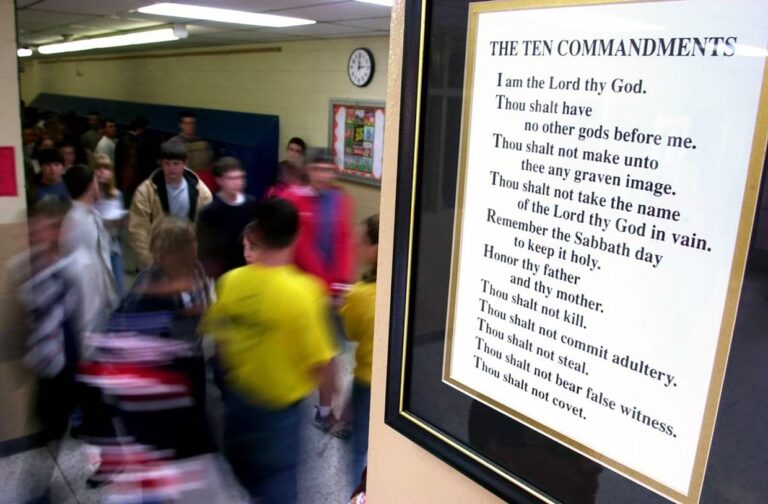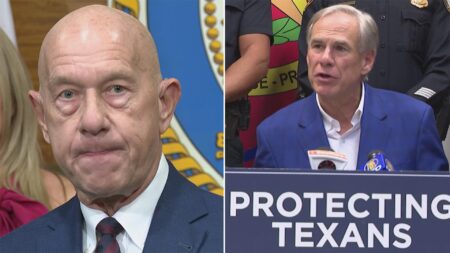Legal Disputes Surrounding Ten Commandments Displays in Texas Schools
Across Texas, an increasing number of school districts are confronting lawsuits challenging the presence of Ten Commandments displays within public school classrooms. These legal actions, initiated by advocacy organizations and concerned parents, contend that such religious exhibits breach the Establishment Clause of the First Amendment by endorsing a particular faith in publicly funded educational settings. Conversely, school officials defend these displays by emphasizing their historical and cultural relevance, arguing they represent foundational principles of American heritage rather than religious promotion.
Legal analysts emphasize that these cases often revolve around intricate interpretations of church-state separation and judicial precedents. This surge in litigation reflects a broader national pattern of contesting religious symbolism in public education. The table below summarizes notable recent lawsuits in Texas:
| School District | Plaintiff | Primary Claim | Case Status |
|---|---|---|---|
| Houston ISD | Freedom From Religion Foundation | Breaching religious neutrality | Preliminary injunction approved |
| Dallas ISD | American Civil Liberties Union | Classroom promotion of religious text | Awaiting trial |
| Austin ISD | Parents for Equality | Unconstitutional religious display | Dismissed on procedural grounds |
- Ongoing litigation is anticipated as advocacy groups escalate their efforts.
- School administrators face the challenge of honoring religious diversity while upholding constitutional law.
- Community opinions remain polarized, reflecting broader cultural debates.
Constitutional Considerations in Religious Displays at Public Schools
The recent wave of lawsuits underscores the persistent friction between educational authorities and constitutional limits concerning religious iconography in public schools. Plaintiffs maintain that exhibiting the Ten Commandments in classrooms violates the Establishment Clause, which requires government neutrality in religious affairs. Defenders argue these displays serve an educational or historical purpose rather than religious endorsement, igniting intense discussions about secularism’s role in education.
Key factors influencing these legal debates include:
- Contextual presentation: Whether the Ten Commandments are integrated into a broader historical or civic curriculum or displayed as religious mandates.
- Judicial precedents: The impact of landmark Supreme Court decisions such as Stone v. Graham and McCreary County v. ACLU on current rulings.
- Local cultural norms: How community values shape acceptance or rejection of religious symbols in public education.
| Legal Issue | Arguments Supporting Displays | Counterarguments |
|---|---|---|
| Establishment Clause | Displays serve secular, educational objectives | Government must not endorse religion |
| Historical Significance | Ten Commandments as a basis for legal principles | Religious texts should be excluded from public curricula |
| Student Rights | Exposure to religious heritage enriches cultural understanding | Displays infringe on students’ freedom from religious imposition |
Effects of Litigation on School Policies and Community Responses in Texas
The mounting legal challenges against Texas school districts over Ten Commandments displays have prompted significant policy reassessments. Many districts have been compelled to remove or modify religious exhibits to align with constitutional mandates ensuring church-state separation. These lawsuits have triggered emergency school board meetings, often marked by intense discussions among educators, parents, and legal counsel. The resulting policy shifts emphasize inclusivity and aim to mitigate future legal risks.
Community reactions reveal a deep cultural divide, reflecting broader societal tensions. While some families and advocacy groups champion the right to religious expression as fundamental, others advocate for secular public schools that respect diverse beliefs. Local responses have included:
- Petitions both supporting and opposing the presence of Ten Commandments displays.
- Town hall meetings fostering dialogue among stakeholders.
- Fundraising efforts to support legal battles on both sides.
These dynamics illustrate the ongoing challenge for school districts to reconcile community values with constitutional obligations, a balancing act that continues to evolve with each new legal development.
Strategies for School Districts to Manage Religious Expression and Legal Obligations
With increasing legal scrutiny over religious displays like the Ten Commandments in Texas classrooms, school administrators must carefully navigate the intersection of religious expression and constitutional compliance. To address these challenges effectively, districts should adopt comprehensive policies that:
- Maintain religious neutrality by refraining from endorsing any particular faith.
- Contextualize religious materials within historical or cultural frameworks rather than devotional settings.
- Incorporate diverse viewpoints in educational content and displays to reflect the pluralistic nature of the student body.
- Engage legal counsel regularly to review policies and ensure adherence to evolving legal standards.
Transparency with parents and community members is also crucial to foster mutual understanding and reduce conflicts. The table below outlines essential compliance recommendations for school boards:
| Compliance Area | Recommended Approach |
|---|---|
| Display Guidelines | Restrict religious displays; balance with secular educational materials. |
| Curriculum Design | Present religious texts academically, emphasizing historical context. |
| Community Involvement | Organize forums to openly discuss policies and concerns. |
| Legal Oversight | Conduct periodic reviews with education law experts. |
Conclusion: Ongoing Challenges in Religious Displays in Texas Schools
The continuing wave of lawsuits confronting Texas school districts over Ten Commandments displays underscores the persistent tension between religious freedom and the constitutional principle of church-state separation. As more districts face legal scrutiny, this issue remains a focal point of debate, raising critical questions about constitutional rights, educational policy, and community values. These developments will undoubtedly influence future discussions and decisions across Texas and beyond. Houston Public Media remains committed to tracking these evolving cases and providing timely updates.




